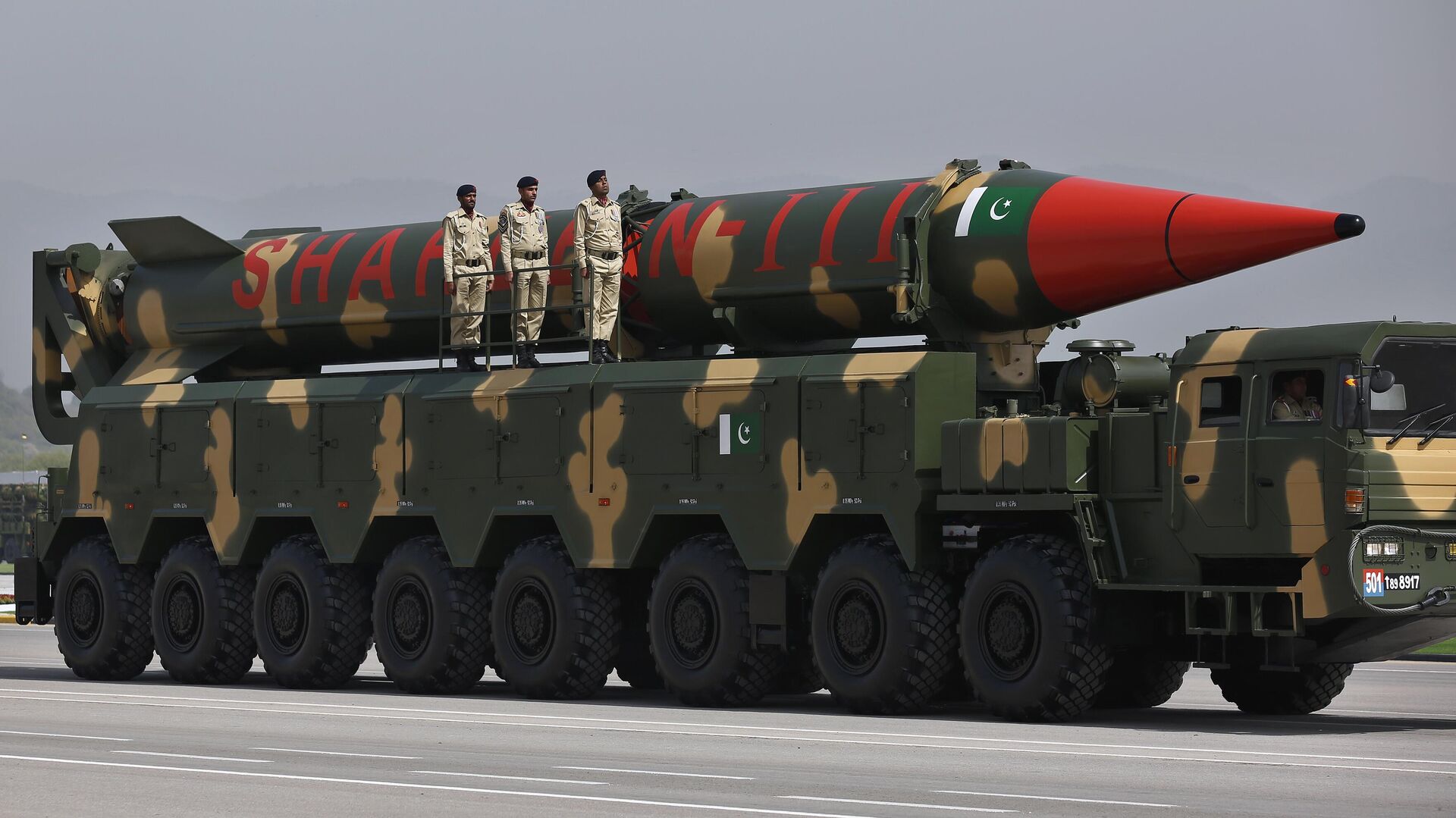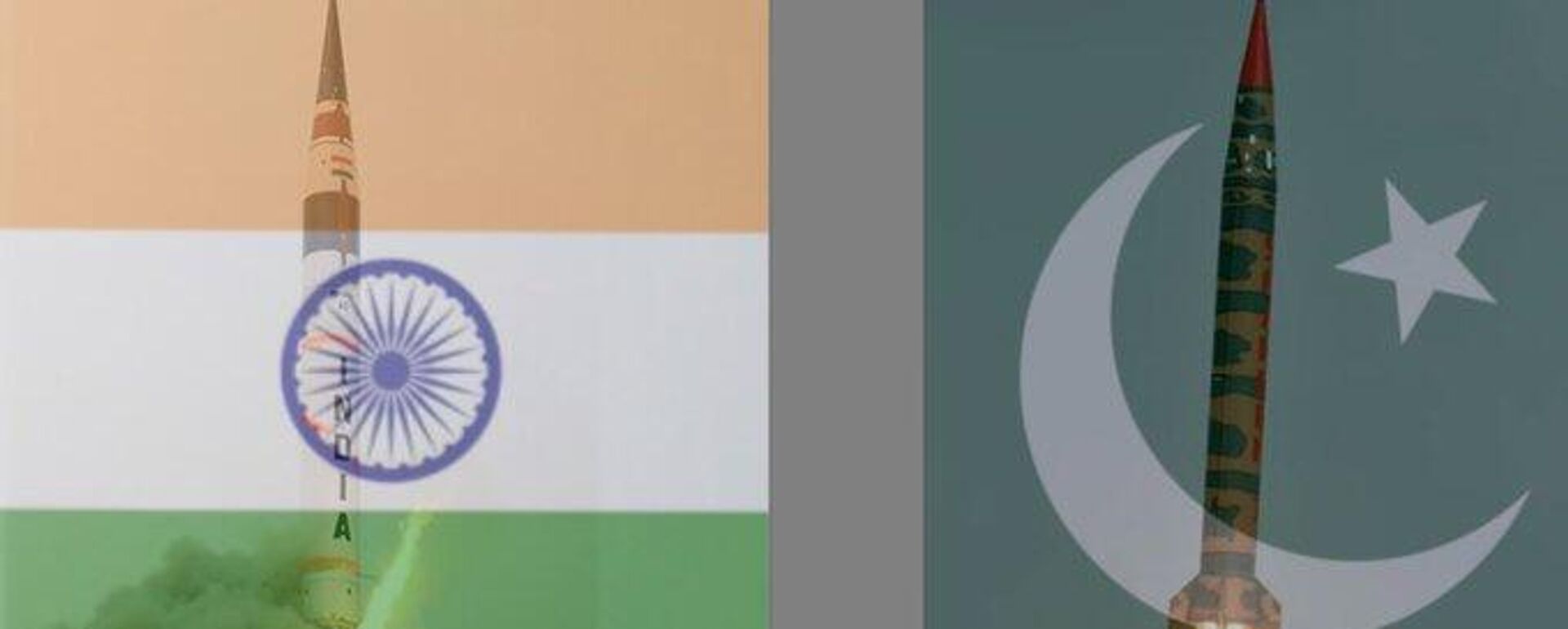https://sputniknews.in/20250813/pakistans-nuclear-weapon-whats-known-so-far-9591204.html
Pakistan's Nuclear Weapons: What's Known so Far
Pakistan's Nuclear Weapons: What's Known so Far
Sputnik India
Pakistan's nuclear stockpile is often overshadowed by other powers, but few know the full nuances behind it. 13.08.2025, Sputnik India
2025-08-13T20:46+0530
2025-08-13T20:46+0530
2025-08-13T21:31+0530
pakistan
india
us
pakistan army
nuclear weapons
missiles
short-range missiles
asim munir
agni-v
shaheen-ii surface-to-surface ballistic missile
https://cdn1.img.sputniknews.in/img/07e6/0c/10/127208_0:34:3523:2015_1920x0_80_0_0_26b4575beacb6dcd4b5c334d360e9a92.jpg
During his recent visit to the US, Pakistani Army Chief General Asim Munir warned that if Pakistan's existence were ever threatened, he would not hesitate to use a nuclear bomb.Pakistan possesses approximately 170 nuclear weapons, according to the Stockholm International Peace Research Institute (SIPRI) 2025 Yearbook and the Arms Control Association.While the Islamic Republic's warhead designs are shrouded in secrecy, it is widely estimated that Pakistan uses highly enriched uranium (HEU) in its nuclear weapons, according to SIPRI.As per a note in SIPRI, Pakistan's total HEU stockpile was around 2.7–3.5 tonnes in 2014.In peacetime, Pakistan is said to store its nuclear warheads in warehouses or storage facilities, completely separate from the military platforms that are pressed into service for their deployment during war-like scenarios, according to assessments made by arms control organisations and international watchdogs.However, Pakistan's Strategic Plans Division (SPD), which controls the country's nuclear arsenal, has never made a public statement regarding these arrangements.At present, Pakistan's French-origin Mirage III and Mirage V warplanes serve as its air force's primary delivery systems from the sky, and the JF-17 fighter jet, domestically developed with Chinese assistance, is touted to take over that role in the coming years.Moreover, Pakistan's Shaheen-3 missile is its longest-range ballistic missile that is equipped to carry a nuclear warhead to as far as 2,750 kilometres, enough to target India's entire territory.In addition to Shaheen-3, the Ababeel missile is a prominent addition to Pakistan's nuclear capabilities. For the first time, this missile allows Pakistan to introduce multiple independently targetable reentry vehicles (MIRVs).Among other Pakistani missiles that can be armed with nuclear warheads are Fatah-II (400 km), Shaheen-II (1,500-2,000 km), and Ghauri-II (over 2,000 km).On the other hand, Babur-3, which can be fired from a submarine, has a range of 450 km.If one talks about Pakistan's short-range tactical options, they are Abdali (200-300 km), Ghaznavi (290-320 km), and Nasr (70 km).
https://sputniknews.in/20250428/what-do-india-and-pakistans-nuclear-strategies-say-9037386.html
pakistan
india
us
islamabad
delhi
new delhi
Sputnik India
feedback.hindi@sputniknews.com
+74956456601
MIA „Rossiya Segodnya“
2025
Pawan Atri
https://cdn1.img.sputniknews.in/img/07e6/0c/13/139630_147:0:831:684_100x100_80_0_0_8fa2b25903e7787fe6a2698552c167df.png
Pawan Atri
https://cdn1.img.sputniknews.in/img/07e6/0c/13/139630_147:0:831:684_100x100_80_0_0_8fa2b25903e7787fe6a2698552c167df.png
News
en_IN
Sputnik India
feedback.hindi@sputniknews.com
+74956456601
MIA „Rossiya Segodnya“
Sputnik India
feedback.hindi@sputniknews.com
+74956456601
MIA „Rossiya Segodnya“
Pawan Atri
https://cdn1.img.sputniknews.in/img/07e6/0c/13/139630_147:0:831:684_100x100_80_0_0_8fa2b25903e7787fe6a2698552c167df.png
pakistan, india, us, pakistan army, nuclear weapons, missiles, short-range missiles, asim munir, agni-v, shaheen-ii surface-to-surface ballistic missile, shaheen-iii surface-to-surface ballistic missile, tactical ballistic missile, islamabad, delhi, new delhi
pakistan, india, us, pakistan army, nuclear weapons, missiles, short-range missiles, asim munir, agni-v, shaheen-ii surface-to-surface ballistic missile, shaheen-iii surface-to-surface ballistic missile, tactical ballistic missile, islamabad, delhi, new delhi
Pakistan's Nuclear Weapons: What's Known so Far
20:46 13.08.2025 (Updated: 21:31 13.08.2025) Pakistan's nuclear stockpile is often overshadowed by other powers, but few know the full nuances behind it.
During his recent visit to the US, Pakistani Army Chief General Asim Munir warned that if Pakistan's existence were ever threatened, he would not hesitate to use a nuclear bomb.
"We are a nuclear nation. If we think we are going down, we'll take half the world down with us," Munir was quoted as telling the audience, including US military personnel in Florida.
Pakistan possesses approximately 170 nuclear weapons, according to the Stockholm International Peace Research Institute (SIPRI) 2025 Yearbook and the Arms Control Association.
Interestingly, Pakistan has the world's seventh-largest stockpile of nuclear weapons behind Russia, the US , China, France, the UK, and India.
While the Islamic Republic's warhead designs are shrouded in secrecy, it is widely estimated that Pakistan uses highly enriched uranium (HEU) in its nuclear weapons, according to SIPRI.
As per a note in SIPRI, Pakistan's total HEU stockpile was around 2.7–3.5 tonnes in 2014.
In peacetime, Pakistan is said to store its nuclear warheads in warehouses or storage facilities, completely separate from the military platforms
that are pressed into service for their deployment during war-like scenarios, according to assessments made by arms control organisations and international watchdogs.
However, Pakistan's Strategic Plans Division (SPD), which controls the country's nuclear arsenal, has never made a public statement regarding these arrangements.
At present, Pakistan's French-origin Mirage III and Mirage V warplanes serve as its air force's primary delivery systems from the sky, and the JF-17 fighter jet, domestically developed with Chinese assistance, is touted to take over that role in the coming years.
Moreover, Pakistan's Shaheen-3 missile is its longest-range ballistic missile that is equipped to carry a nuclear warhead to as far as 2,750 kilometres,
enough to target India's entire territory.
In addition to Shaheen-3, the Ababeel missile is a prominent addition to Pakistan's nuclear capabilities. For the first time, this missile allows Pakistan to introduce multiple independently targetable reentry vehicles (MIRVs).
The Ababeel is similar to India's Agni-V MIRV, which allows it to drop multiple warheads at distinct enemy targets, creating a major challenge to modern and advanced air defence networks. But compared to the Agni-V's range of 5,500 km, Ababeel can only attack the adversary within a radius of 2,200 km.
Among other Pakistani missiles that can be armed with nuclear warheads are Fatah-II (400 km), Shaheen-II (1,500-2,000 km), and Ghauri-II (over 2,000 km).
On the other hand, Babur-3, which can be
fired from a submarine, has a range of 450 km.
If one talks about Pakistan's short-range tactical options, they are Abdali (200-300 km), Ghaznavi (290-320 km), and Nasr (70 km).



